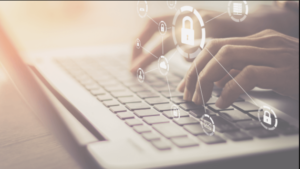How Should Government-Owned Removable Media Be Stored: Secure Solutions

Government-owned removable media should be stored securely and with restricted access. Safe storage includes locked cabinets or safes within controlled areas.
Removable media, such as USB drives, CDs, and external hard drives, play a critical role in government operations. They store sensitive data that requires the utmost protection. The potential for loss, theft, or compromise necessitates strict storage protocols to safeguard national security and citizens’ privacy.
Government agencies implement stringent security measures to manage the risks associated with these storage devices. These protocols often include physical barriers, such as locked storage facilities, complemented by digital safeguards like encryption and access controls. Ensuring that these security practices are regularly updated and adhered to is paramount for maintaining the integrity and confidentiality of the information contained within the removable media. Therefore, managing removable media in government sectors is a cornerstone of contemporary information security strategies.
Contents
- 1 Introduction To Government Data Security
- 2 Types Of Removable Media Used By Governments
- 3 Assessing Security Risks For Removable Media
- 4 Policy Development For Removable Media Handling
- 5 Physical Storage Solutions
- 6 Digital Protection Strategies
- 7 Inventory Management And Tracking
- 8 The Role Of Technology In Secure Storage
- 9 Case Studies: Best Practices In Action
- 10 Looking To The Future
- 11 Conclusion
Introduction To Government Data Security

Protecting government data is critical in today’s digital era. Sensitive information must remain secure, especially when stored on removable media. Such media are easy targets for theft or loss, leading to potential breaches. This section explores best practices for storing government-owned removable media.
The Importance Of Safeguarding State Data
State agencies handle vast amounts of confidential data, from personal citizen information to national security details. Data protection is paramount. Proper storage protocols prevent unauthorized access and ensure national safety and public trust.
- Trust: Secure data maintains public confidence.
- Safety: It keeps sensitive data out of the wrong hands.
- Compliance: Adherence to laws and regulations is necessary.
Challenges In Removable Media Storage
Removable media pose unique challenges. Their portable nature makes them susceptible to being misplaced or stolen. The limited storage capacity may also lead to frequent data transfers, increasing the risk of exposure.
| Challenge | Details |
| Portability Risks | Higher likelihood of loss or theft. |
| Data Transfers | Increased exposure during movement. |
| Encryption Needs | Essential for protecting data on the move. |
Types Of Removable Media Used By Governments
Removable media is crucial for government agencies. These devices store and transfer sensitive data, so protection is critical. Secure storage and careful handling are vital.
USB Drives And Their Vulnerabilities
USB drives, also known as flash drives, are widely used in government offices. They are small, portable, and have sizable storage capacity. Despite these positives, USB drives can be easily lost or stolen, posing a significant threat.
- Physically slight and easily concealed
- Can carry malware from one computer to another
- Encryption is crucial but not always used
Agencies must enforce strict USB usage policies to mitigate risks. Secure storage with access control is essential.
External Hard Drives And Encryption Standards
External hard drives offer more storage than USBs. Their larger size reduces the risk of loss. But they are still at risk for theft or unauthorized access.
Modern drives often come with built-in encryption. This secures data even if the drive is lost or stolen. Government standards require high-level encryption, such as:
| Encryption Standard | Usage |
| AES 256-bit | High-security encryption for sensitive data |
Optical Media: CDs and DVDs in The Government Setting
Government agencies have used CDs and DVDs for decades. They store data that is frequently kept the same. However, these media can be damaged or degraded over time. Safeguards include:
- Storing in controlled environments
- Regular data backup
- Access control on data use
Durability and longevity issues necessitate regular migration to new media. Agencies should opt for optical media rated for professional use.
Assessing Security Risks For Removable Media
Government-owned removable media, such as USB drives, are essential in today’s digital world. They store sensitive data and often travel between various locations, raising security concerns. Assessing and mitigating these risks is crucial to safeguarding national security and protecting confidential data.
Physical Theft And Loss
Physical theft and loss are real risks for removable media.
- Media devices are small and easy to misplace or steal.
- A lost device can result in compromised security.
- Recovery of lost devices is often challenging.
Strategies include enforcing strict checkout systems and using tracking technology.
Data Breaches And Malware Risks
Removable media can be a carrier for data breaches and malware.
- Devices plugged into non-secure systems may transfer malware.
- Unauthorized access can lead to data leaks.
- Strong encryption and regular scans are essential to protecting devices.
Use authorized software for encryption and malware detection.
Policy Development For Removable Media Handling
The safeguarding of removable media is critical in government operations. Policy Development for Removable Media Handling offers structured directives to ensure the security and integrity of sensitive data. Establishing clear guidelines is essential for mitigating risks associated with using removable media such as USB drives, external hard drives, and CDs.
Creating A Framework For Usage And Access
Creating standards for removable media usage ensures controlled access protecting classified information.
- Identify authorized users: Clearly define which staff members can use removable media.
- Specify the media types: Only allow approved media types for specific tasks.
- Define access levels: Users should access data based on their clearance level.
- Enforce usage locations: Restrict data transfer to secure environments.
A robust framework prevents unauthorized data access and leakage.
Training And Awareness For Government Staff
Staff training ensures adherence to security protocols. Frequent workshops increase data protection awareness.
- Educate employees on policy specifics.
- Demonstrate proper media handling procedures.
- Conduct regular security drills.
- Review incident response methods.
Consistent awareness programs significantly reduce human error, keeping government data safe.
Physical Storage Solutions
Physical Storage Solutions is critical to safeguarding sensitive information stored on government-owned removable media. These solutions prevent unauthorized access and ensure that data integrity remains intact. Below are essential physical storage measures any government entity must consider implementing.
Secured Storage Lockers
Secured storage lockers are vital for protecting removable media. Designed to resist tampering and unauthorized entry, these lockers offer a robust defence against potential security breaches. Key features to look for in secure storage lockers include:
- Sturdy construction: Reinforced with durable materials.
- Advanced locks: Biometric or combination locks for enhanced security.
- Audit trails: Integrated systems to track access.
- Climate control: Maintains optimal conditions for media preservation.
Controlled Access Rooms
Controlled access rooms serve as another layer of defence. Here, access is limited to authorized personnel only. These rooms are engineered with the following:
- Secure entry points protected by advanced locking mechanisms.
- Multi-factor authentication to verify user identity.
- Surveillance systems to monitor and record activity around the clock.
- Environmental controls to maintain temperature and humidity at ideal levels.
Combining these measures ensures the highest security standard for government removable media storage.
Digital Protection Strategies
Safeguarding removable media is crucial for government entities. Digital Protection Strategies ensure that sensitive data remains secure, even when stored in portable formats. These strategies encompass encryption, software upkeep, and regular scanning for threats. By implementing these measures, agencies can protect themselves against data breaches.
Implementing Robust Encryption
Encryption is the first line of defence for removable media. It turns accessible data into a secured code only authorized users can decipher.
- Select advanced encryption standards.
- Use strong, unique passwords.
- Encrypt media both at rest and in transit
AES-256, RSA, and Twofish are examples of encryption methods.
Regular Software Updates And Antivirus Scans
Updating software patches security holes. Antivirus scans are vital for detecting malware.
- Schedule automatic updates for all systems
- Perform antivirus checks before and after media use
- Keep antivirus databases current
| Task | Frequency |
| System Update | Regularly |
| Antivirus Scan | Before/After Use |
Inventory Management And Tracking
For government entities, managing removable media requires a robust system. Effective inventory management and tracking ensure the security and integrity of data. Such systems help locate items swiftly and keep them secure. Let’s dive into the practical strategies and processes that make this possible.
Barcoding And Inventory Logs
Barcoding plays a crucial role in inventory control. Each piece of media gets a unique barcode. This simplifies the tracking process. Inventory logs capture these details in a central database. The information includes item type, checkout date, and current user. This practice makes data retrieval straightforward.
Regular updates to inventory logs are vital for maintaining an accurate account of removable media. Agencies can automate this process using barcodes.
| Item | Barcode | Status | Current User |
| USB Drive | 12345 | Checked Out | John Doe |
| External HDD | 67890 | In Storage |
Audits And Reconciliation Processes
Regular audits are essential. They verify the physical stock against inventory logs. Discrepancies must be investigated and resolved. This is where reconciliation processes come in.
- Identify missing items: Is something not where it should be?
- Checkout records: Who last accessed the missing media?
- Update records: Adjust logs to reflect the current status.
These steps ensure that every item is accounted for. They cement trust in the government’s ability to safeguard sensitive information. External audits may also occur, providing an additional layer of accountability.
The Role Of Technology In Secure Storage
The Role of Technology in the Secure Storage of government-owned removable media cannot be overstated. Innovative tech solutions provide robust safeguards, especially given the rise of digital data threats. Protecting sensitive information demands reliable and sophisticated security measures, and technology is pivotal in ensuring these protective barriers are practical and efficient.
Biometric Security Systems
Biometric security systems offer a unique approach to safeguarding data. These systems use physical characteristics, such as fingerprints or retinal scans, to grant access. Here are some key benefits:
- Unique Authentication: Each individual’s biometric data is unique, minimizing the risk of unauthorized access.
- Fast Access: Biometric systems provide quick access for authorized personnel, enhancing productivity.
- Reduced Risk of Theft: Physical media is useless without the corresponding biometric match, deterring theft.
Using Blockchain For Data Integrity
Blockchain technology stands out for maintaining data integrity across government-owned media. Here’s how it secures data:
- Immutable Records: Once data is entered into a blockchain, it cannot be altered, ensuring historical accuracy.
- Decentralized Storage: Data is stored across a network, reducing the risk of centralized data breaches.
- Traceability: Every interaction with the data is logged, creating a transparent audit trail.
Case Studies: Best Practices In Action
Ensuring the security of removable media is critical in government agencies. These devices often carry sensitive data that could lead to security threats if mismanaged. By examining successful agencies’ steps, others can learn and implement similar practices. Let’s look at some examples and lessons from the field.
Government Agencies With Successful Security Protocols
Several government bodies stand out for their robust security measures. These agencies understand the importance of protecting removable media and have established stringent protocols.
- Encryption of Data: Agency X mandates encryption for all removable media. This ensures that data remains secure, even if the device is lost or stolen.
- Access Controls: Agency Y uses advanced biometric access controls to limit who can use specific devices. Only authorized personnel can unlock and use the media.
- Training Programs: Agency Z has invested in continuous training for its staff. They learn how to handle media properly and store it to prevent breaches.
Lessons Learned From Security Breaches
History has shown that even the tiniest oversight can lead to significant breaches. By studying these events, valuable lessons emerge.
| Incident | Lesson |
| Removable Device Theft: | Physical security is essential. Unattended media must be locked away. |
| Unauthorized Data Access: | Strict access controls can prevent unauthorized use and data leakage. |
| Lack of Policy Adherence: | Regular audits ensure policies are followed and identify areas for improvement. |
Government agencies can tighten security and protect sensitive information on removable media devices by addressing these vulnerabilities.
Looking To The Future
The future of data security is vital for government operations. As technology advances, so does the need for robust security measures. Upcoming innovations and updated policies play a critical role in safeguarding removable media. These new steps will ensure sensitive information stays protected in the digital age.
Innovations In Removable Media Security
New tech shapes the safety of removable media. Let’s explore these advancements and their impact.
- Biometric Locks: Thumbprints secure data access like never before.
- Encryption Enhancements: Cutting-edge encryption methods keep files safe.
- GPS Tracking: Locate lost drives fast with built-in GPS.
- Remote Wipe Capabilities: Vanish data remotely to prevent unauthorized access.
- Self-Destruct Options: Drives that physically destroy data when tampered with.
Policy Updates And The Evolving Nature Of Data Protection
Government policies must adapt to tech changes. Here’s what’s in store:
| Policy Area | Action | Expected Outcome |
| Data Encryption Standards | Introduction of stricter encryption requirements | Enhance protection against cyber threats |
| Audit Trails | Implement comprehensive usage logs | Track data access and transfer accurately |
| Usage Policies | Stricter rules on media handling and storage | Decrease the risk of data leaks and loss |
These updates establish higher security standards for handling sensitive information.
Conclusion
Securing government removable media demands vigilant adherence to stringent protocols. These storage practices ensure data integrity and national security. Clear guidelines and routine audits are vital. Adopting such measures protects sensitive information from unauthorized access. Safeguarding our nation’s digital assets remains a top priority.

